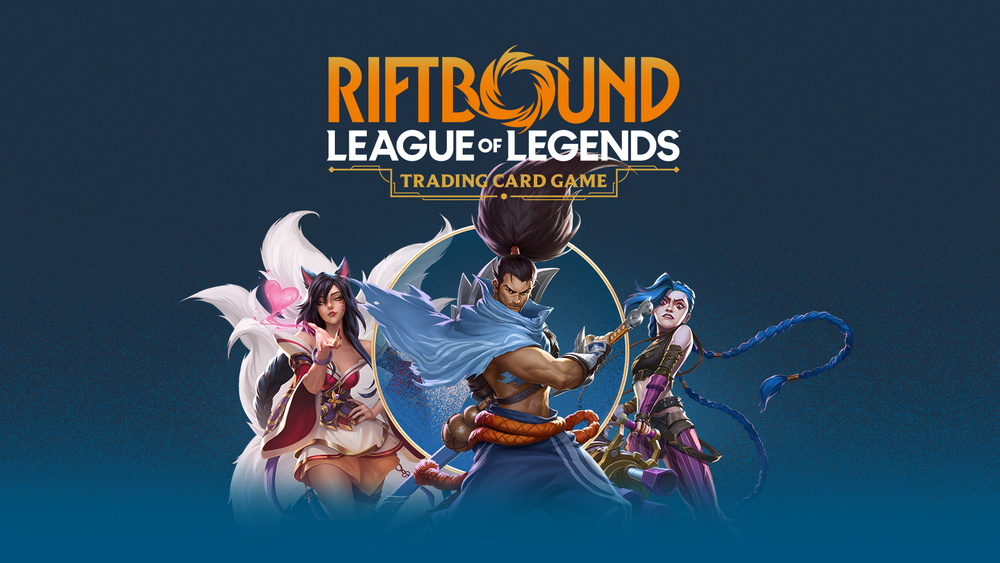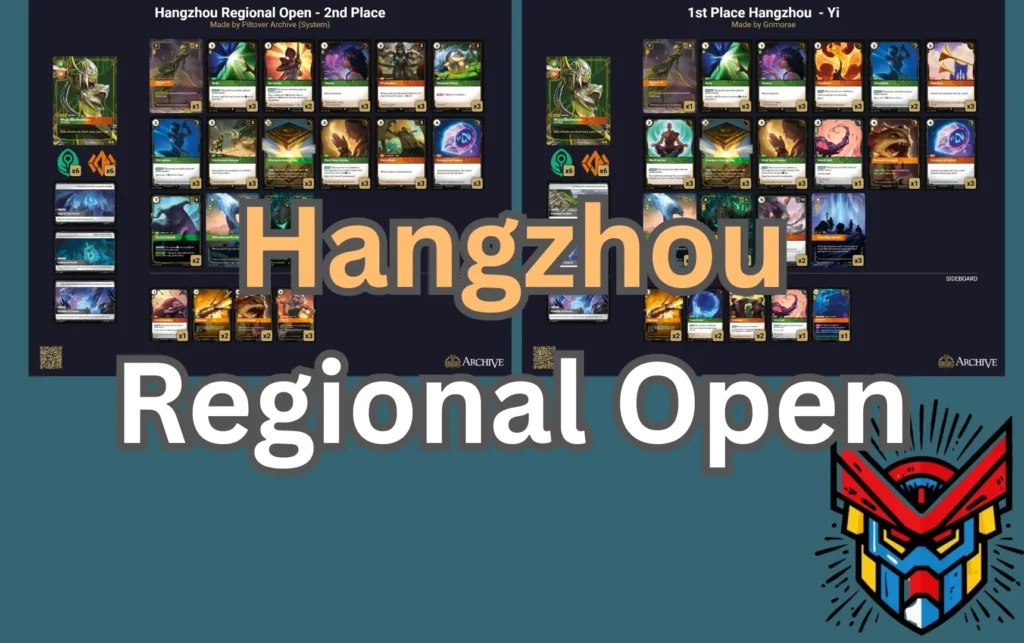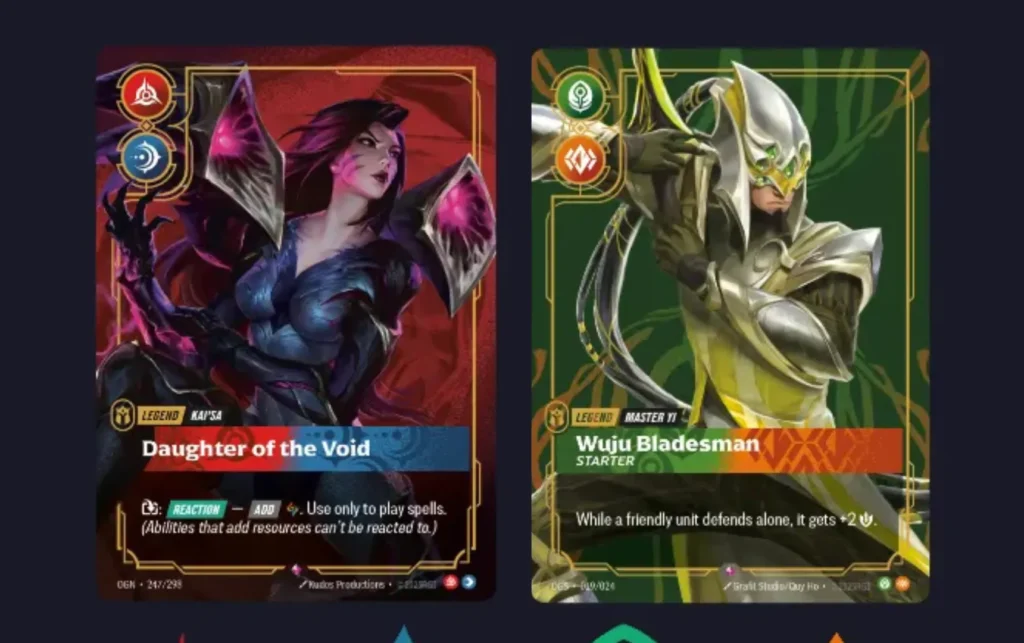Riot Games is launching Riftbound TCG, a physical trading card game based on League of Legends, on October 31, 2025, marking the company’s second attempt at bringing their popular MOBA universe to the card game format. Unlike the digital Legends of Runeterra, Riftbound will be a traditional physical TCG where players collect cards, build decks around iconic champions like Jinx and Viktor, and compete face-to-face in strategic battles over battlefield locations.
Legend Cards and Champions
The heart of any Riftbound deck lies in its Legend cards – powerful champion versions that act like supercharged generals commanding your army. These premium cards represent fan-favorite League characters in their most iconic forms, each bringing unique abilities that define entire deck strategies. Think of Legend cards as the quarterback of your team – they don’t just participate in battles, they fundamentally change how your entire deck operates.
Each champion comes with their own signature spell, a devastating one-time use card that captures their most memorable ability from the video game. For example, Miss Fortune’s “Bullet Time” lets you quickly reposition units and unleash concentrated firepower, while Kai’sa’s expensive but game-ending “Icathian Rain” can obliterate multiple enemy positions simultaneously. The Origins set features nearly 40 different champions ranging from straightforward powerhouses like Volibear, who rewards playing big creatures, to complex tactical options like Teemo, who specializes in hiding cards and bringing them back at crucial moments. These Legend cards essentially serve as your deck’s identity – choosing Darius means building around casting multiple spells per turn, while selecting Yasuo opens up movement-based strategies that can transport units without exhausting them.
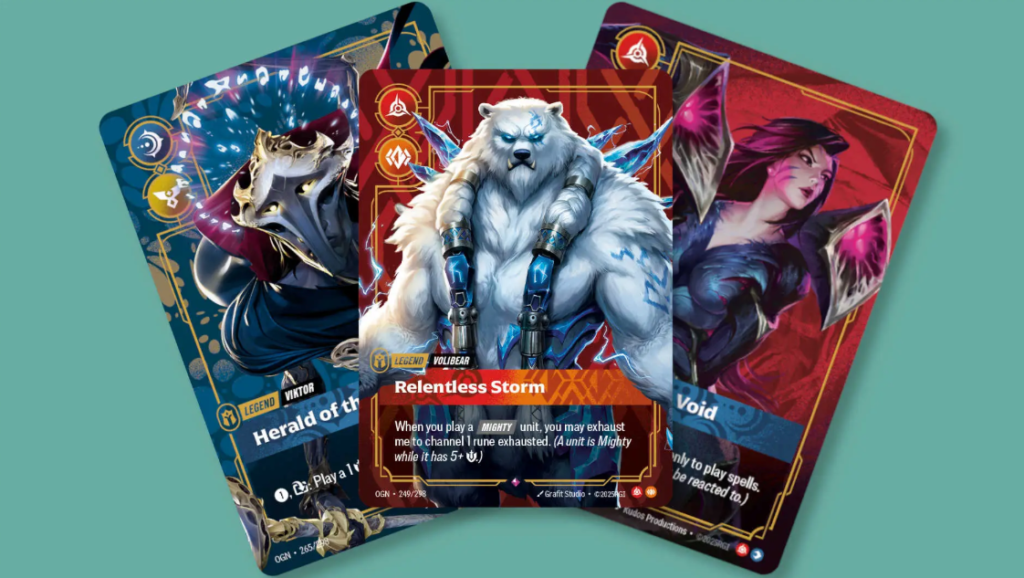
Battlefield Conquest Mechanics
Winning in Riftbound revolves around a simple concept: be the first to reach 8 points by conquering and holding battlefield locations. Think of battlefields like capture points in a video game – you score one point when you first take control of a battlefield, and another point each turn you maintain control of it. To claim an undefended battlefield, simply move one of your units there by exhausting it (turning it sideways), but if enemies are already present, you’ll trigger a “Showdown” – essentially a tactical skirmish where both sides’ units fight using their Might values as attack and defense stats.
Combat follows straightforward rules: add up all your units’ Might on that battlefield, then distribute that damage among enemy units, with lethal damage being applied before moving to the next target. If you eliminate all defenders, you conquer the battlefield and score your point. The final point requires special conditions – you must either hold a battlefield at the start of your turn or conquer all battlefields in a single turn to claim victory. This creates dramatic endgame scenarios where simply conquering one battlefield for your eighth point won’t win the game unless you control everything on the board.
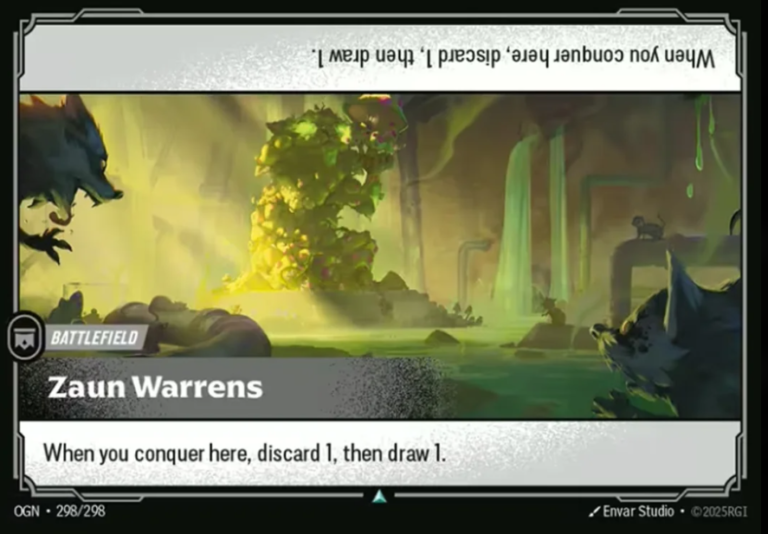
Riftbound TCG: Six Domain Color System
Riftbound features six distinct Domains (essentially colors) that function like magical schools, each with its own personality and tactical approach. Your Legend card determines which Domain combinations you can use – for instance, Jinx allows red Fury and purple Chaos cards, while other champions might blend different Domain pairs to create entirely unique strategies.
Each Domain brings its own flavor of warfare to the battlefield:
- Fury (Red) – The aggressive domain focused on cheap, fast-attacking units and direct damage removal
- Calm (Green) – Specializes in buffing your units and protecting them with counterspells
- Mind (Blue) – The control domain packed with card draw and tactical manipulation
- Body (Orange) – Ramps up resources quickly to deploy massive, high-cost creatures
- Chaos (Purple) – Masters movement abilities and can bounce enemies off battlefields
- Order (Yellow) – Swarms the board with token units and “go wide” strategies
The genius of this system lies in how Domain combinations create hybrid strategies – a Fury/Chaos deck might use cheap aggressive units enhanced by superior positioning abilities, while a Mind/Body combination could control the early game before dropping game-ending threats. This dual-Domain approach means every Legend offers a unique tactical identity that goes far beyond simple color restrictions.
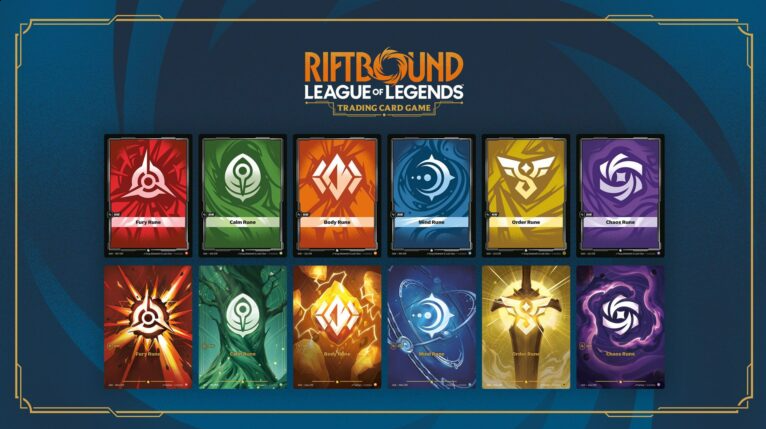
Riftbound TCG: How to Play Guide
Getting started with Riftbound is surprisingly straightforward once you understand the basic flow. Each game begins with both players drawing four cards, then optionally putting up to two unwanted cards on the bottom of their deck to draw better replacements. The first player is determined by shuffling the battlefields and selecting one randomly. Your turn follows a simple ABCD structure: Awaken (ready your exhausted units), Beginning (resolve start-of-turn effects), Channel (play two runes from your Rune Deck), and Draw (add one card from your Main Deck to hand). The player going second gets a small advantage by channeling three runes instead of two on their first turn.
During your main phase, you can play units and spells, activate abilities, and move units to battlefields in any order you choose. The key tactical decision revolves around when to send your units into battle versus building up forces in your base – you can play it safe by assembling a larger army over multiple turns before making your conquest attempts. Moving a unit to an empty battlefield automatically conquers it for one point, while moving to an enemy-controlled battlefield triggers combat. Once you finish all your actions, simply announce “I’m done” to end your turn, and all units return to full health regardless of any damage taken during combat.

